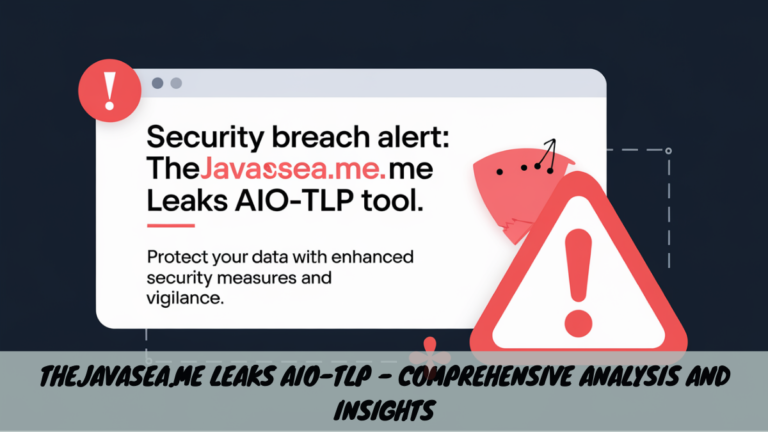Teenleak – A Guide to Understanding and Preventing Teen Privacy Breaches
The digital age has brought about numerous changes in the way we interact, communicate, and share information. One of the more concerning developments is the phenomenon known as “teenleak.” This term refers to the unauthorized sharing of private and often sensitive information of teenagers online. This comprehensive guide aims to provide an in-depth understanding of teenleak, its implications, preventive measures, and steps to take if one becomes a victim.
1. Introduction to Teenleak
What is Teenleak?
Teenleak refers to the unauthorized dissemination of private and sensitive information belonging to teenagers. This can include personal photos, videos, contact details, and other confidential data. The term highlights the specific vulnerability of teenagers in the digital landscape, where privacy breaches can have profound and long-lasting effects.
The Evolution of Online Privacy Concerns
Online privacy has been a growing concern since the advent of the internet. As more people, especially teenagers, share personal information online, the risk of that information being leaked or misused has increased. Social media platforms, cloud storage services, and other online spaces have become potential hotspots for data breaches.
2. How Teenleak Happens
Common Methods of Information Leaks
- Hacking and Cyber Attacks: Cybercriminals use various techniques to gain unauthorized access to personal information.
- Phishing: Deceptive emails or messages trick users into providing personal information.
- Social Engineering: Manipulating individuals into revealing confidential information.
- Careless Sharing: Accidental or careless sharing of information by teenagers themselves.
Platforms Frequently Involved
- Social Media: Facebook, Instagram, Snapchat, and TikTok are common platforms where teenleak incidents occur.
- Messaging Apps: WhatsApp, Messenger, and similar apps can be exploited for leaking personal information.
- Cloud Services: Unauthorized access to cloud storage can result in data breaches.
3. The Impact of Teenleak
Emotional and Psychological Consequences
The emotional toll of a teenleak incident can be severe. Victims may experience:
- Anxiety and Depression: The stress of having private information exposed can lead to mental health issues.
- Loss of Trust: Difficulty in trusting others, including friends and family.
- Shame and Embarrassment: Feeling humiliated by the public exposure of personal information.
Social and Academic Repercussions
Teenleak can also affect a teenager’s social life and academic performance:
- Bullying and Harassment: Leaked information can be used to bully or harass the victim.
- Social Isolation: Victims may withdraw from social interactions to avoid judgment.
- Academic Decline: The emotional distress can negatively impact concentration and performance in school.
4. Preventive Measures Against Teenleak
Educating Teenagers About Online Safety
Education is key to preventing teenleak. Teenagers should be taught:
- The Importance of Privacy: Understanding why keeping information private is crucial.
- Safe Online Practices: Using strong passwords, avoiding suspicious links, and being cautious about what they share.
Best Practices for Online Privacy
- Privacy Settings: Regularly updating and managing privacy settings on social media and other platforms.
- Two-Factor Authentication: Adding an extra layer of security to online accounts.
- Monitoring Accounts: Keeping an eye on account activity for any unusual behavior.
5. What to Do if You Are a Victim of Teenleak
Immediate Steps to Take
- Report the Incident: Contact the platform where the leak occurred and report the breach.
- Change Passwords: Immediately change passwords for compromised accounts.
- Seek Support: Reach out to trusted adults, friends, or counselors for emotional support.
Legal and Psychological Support
- Legal Action: Explore legal options to address the breach and hold perpetrators accountable.
- Counseling: Professional counseling can help victims cope with the emotional impact.
6. Case Studies and Real-Life Examples
Notable Incidents and Their Outcomes
Examining real-life cases of teenleak can provide valuable insights:
- Case Study 1: A high-profile incident involving a social media influencer whose personal photos were leaked.
- Case Study 2: An example of a widespread phishing attack targeting teenagers.
7. The Role of Parents, Educators, and Policymakers
Parental Guidance and Supervision
Parents play a crucial role in safeguarding their children’s online privacy:
- Open Communication: Encouraging open discussions about online experiences and concerns.
- Supervision: Monitoring online activity without invading privacy.
Educational Initiatives
Schools and educational institutions can contribute by:
- Incorporating Online Safety into Curriculum: Teaching students about the importance of online privacy and safety.
Policy and Legal Framework
Policymakers can help protect teenagers by:
- Enforcing Stricter Regulations: Implementing laws that hold platforms accountable for data breaches.
- Raising Awareness: Running campaigns to educate the public about online safety.
8. Future Trends and Predictions
Technological Advances and Their Implications
As technology evolves, so do the methods used for teenleak:
- AI and Machine Learning: Both can be used to enhance security but also to perpetrate more sophisticated attacks.
Evolving Threats and Countermeasures
Future threats may include:
- Deepfakes: Manipulated videos or images that can be used for malicious purposes.
- Advanced Phishing Tactics: More sophisticated methods to deceive individuals.
9. FAQs
Common Questions and Concerns
- What should I do if my child’s information is leaked?
- Report the incident, change passwords, and seek professional support.
- How can I talk to my teenager about online safety?
- Foster open communication, use real-life examples, and set a good example with your own online behavior.
- Are there laws protecting teenagers from online privacy breaches?
- Yes, there are various laws, but their effectiveness can vary. It’s important to stay informed and proactive.
10. Conclusion
Teenleak is a serious issue that demands attention and action from individuals, families, educators, and policymakers. By understanding the risks, implementing preventive measures, and providing support to victims, we can create a safer online environment for teenagers. Continuous education and vigilance are key to combating this growing threat.
also read: Öbversätt – The Simplest Way to Translate Online







